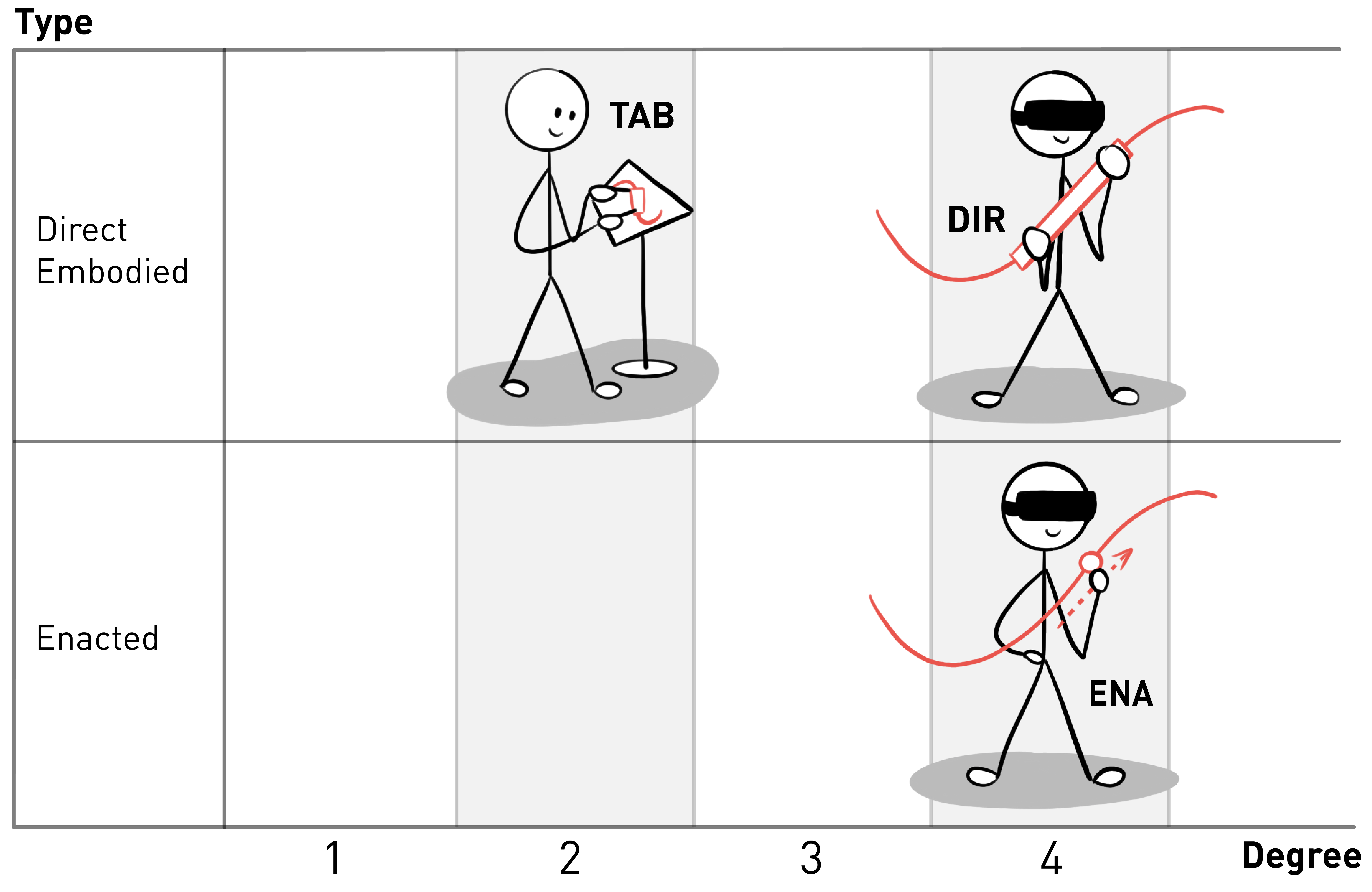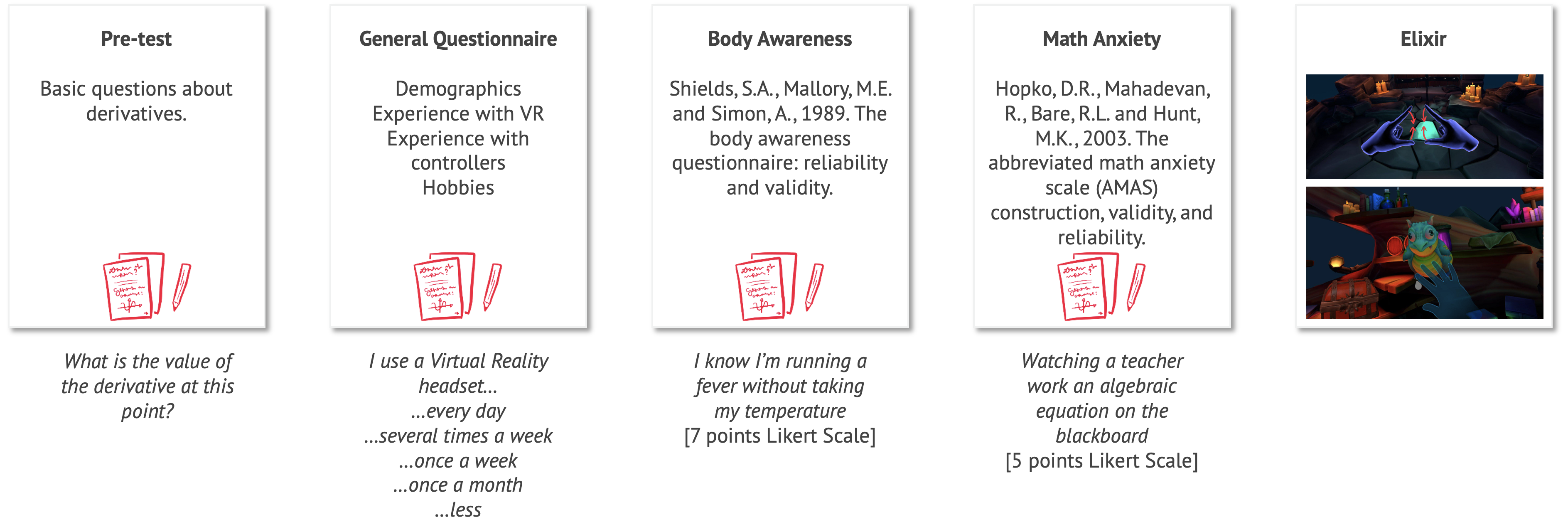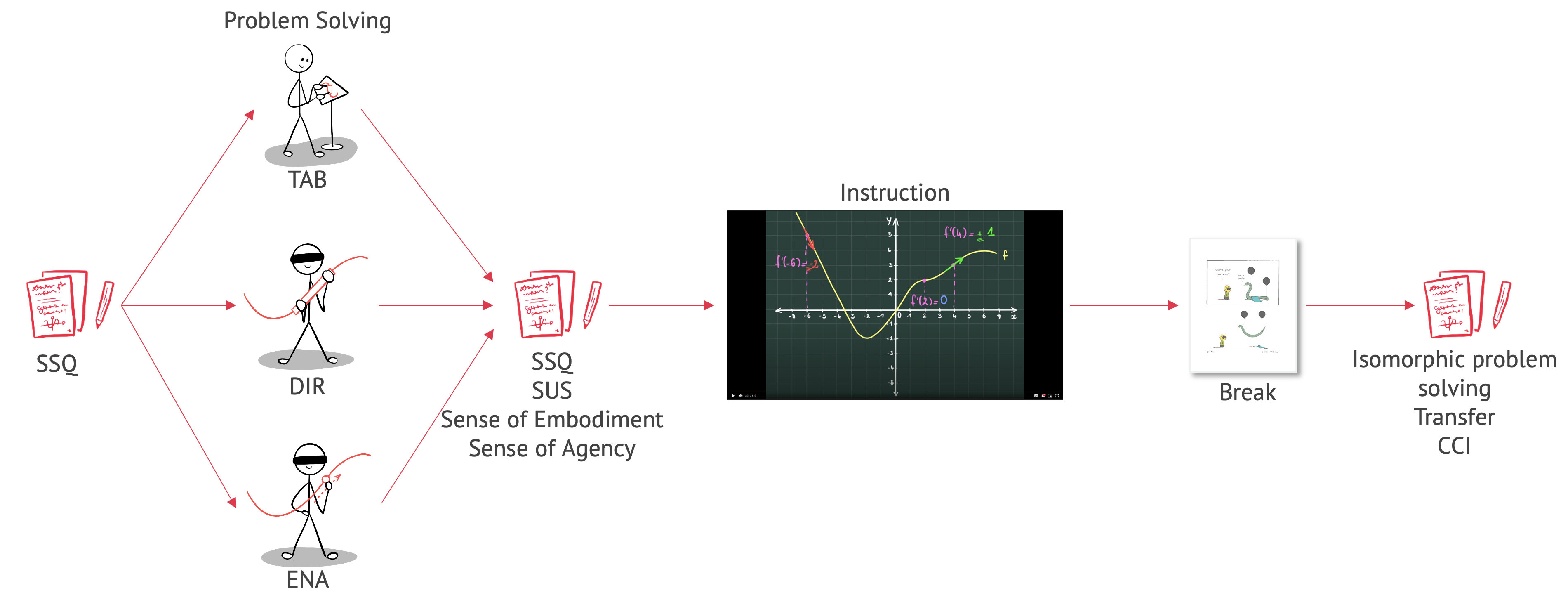Grasping Derivatives
Apr 2022Our paper, "Grasping Derivatives: Teaching Mathematics through Embodied Interactions using Tablets and Virtual Reality", is part of Interaction Design and Children (IDC’22).

Abstract
Grasping mathematics can be difficult. Often, students struggle to connect mathematical concepts with their own experiences and even believe that math has nothing to do with the real world. To create more concreteness in mathematics education, we focus on the role of the body in learning, and more specifically, embodied interactions for learning derivatives. In this project, we designed an embodied game to teach derivatives, and validated our design with a panel of experts. We then used this prototype to explore different embodied interactions in terms of usability, sense of embodiment, and learning outcomes. In particular, we evaluated different degrees of embodied interactions, and different types of embodied interactions in Virtual Reality. We conclude with insights and recommendations for mathematics education with embodied interactions.
Embodiment Matrix
In order to summarize our conditions, we assembled an "Embodiment matrix". The horizontal axis represents the degree of embodiment. The vertical axis represent the type of embodiment. The TAB condition is a direct-embodied approach with lower embodiment (on a tablet). The DIR condition is also a direct-embodied approach, but with higher embodiment (in Virtual Reality). Finally, the ENA condition is an enacted approach with high embodiment (in Virtual Reality). Please check our paper for more information and references.

Materials
The video for the IDC paper is available online:
The quantitative study was composed of a preparation intervention of 20 minutes, and an intervention of 1 hour and 30 minutes.
The preparation was composed of:
- A pre-requisite questionnaire, a general questionnaire, a body awareness questionnaire, and a math anxiety questionnaire. (en) (de)
- A Virtual Reality game focused on hand tracking, "Elixir". (link)

The intervention was composed of:
- A Simulator Sickness Questionnaire. (en) (de)
- A problem solving phase in one of the three conditions (TAB = direct-embodied on tablet, DIR = direct-embodied in Virtual Reality, or ENA = enacted in Virtual Reality).
- A Simulator Sickness Questionnaire, a System Usability Scale Questionnaire, a sense of embodiment questionnaire, and a sense of agency questionnaire. (en tablet) (de tablet) (en VR) (de VR)
- An instruction video. (en) (de)
- A short break, including comics to read.
- A post-test, including questions from a Calculus Concept Inventory. (en) (de)

Team
- Julia Chatain - Implementation of TAB, DIR, and ENA prototype, Supervision, Quantitative study, Paper writing.
- Virginia Ramp - First prototype implementation, Preliminary user study.
- Dr. Venera Gashaj - Quantitative study, Paper writing.
- Violaine Fayolle - Graphic design, Video.
- Prof. Dr. Manu Kapur - Learning Sciences supervision.
- Prof. Dr. Robert W. Sumner - Computer Science supervision.
- Dr. Stéphane Magnenat - Supervision, Paper manuscript edition.
Acknowledgments
We would like to thank:
- Keny Chatain, Vera Baumgartner, Nino Antulov-Fantulin, Simona Bochsler, Dragan Trninić, and Dražen Popović for the advice and feedback.
- Anna Ettlin and Emma Eglinton for the acting and voice over.
- Colleagues from GTC and LSE for their help and feedback, and in particular Charlotte Müller, Vera Baumgartner, Dominic Weibel, Chen Yang, Corinne Meier, Nadja Beeler, Samuel Tobler and Alex von Bergen who helped conducting the user studies.
- Anna Ettlin, Fabio Zünd, Charlotte Müller, Henry Raymond, Vera Baumgartner and Alex von Bergen for the translation of the materials to German.
- The Future Learning Initiative of ETH Zurich for supporting and funding our project.
- The reviewers for their insightful comments to improve our work.
- and, most importantly, the participants of the user studies as well as their teachers for making our project possible.
Publications
Chatain, Julia, Virginia Ramp, Venera Gashaj, Violaine Fayolle, Manu Kapur, Robert W. Sumner, Stéphane Magnenat. "Grasping Derivatives: Teaching Mathematics through Embodied Interactions using Tablets and Virtual Reality". In Interaction Design and Children (IDC’22). (2022). (link) (pdf)
Poster - Chatain, Julia, Virginia Ramp, Venera Gashaj, Violaine Fayolle, Manu Kapur, Robert W. Sumner, Stéphane Magnenat. "Grasping Derivatives with Embodied Interactions". Joint Doctoral Program ETH-EPFL Kick-off Event. (2022). (pdf)
Related Links
Kudos page. (link)